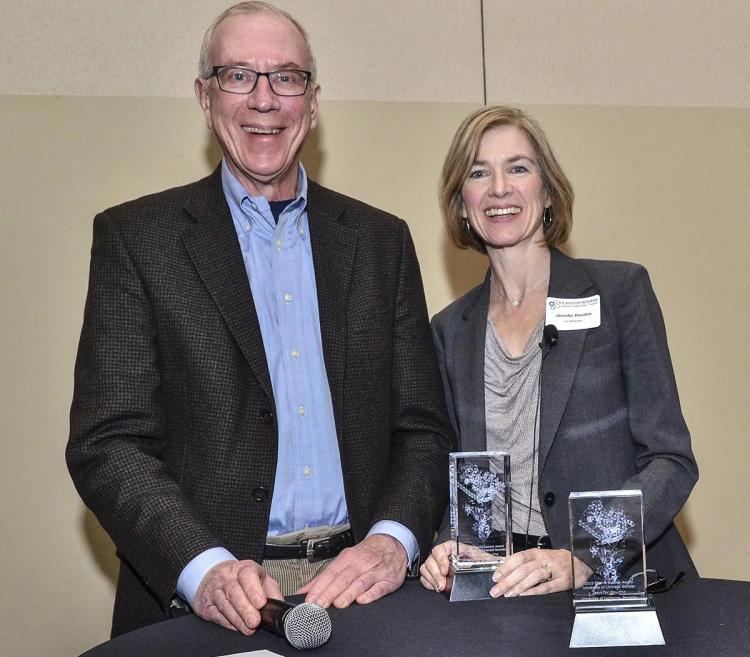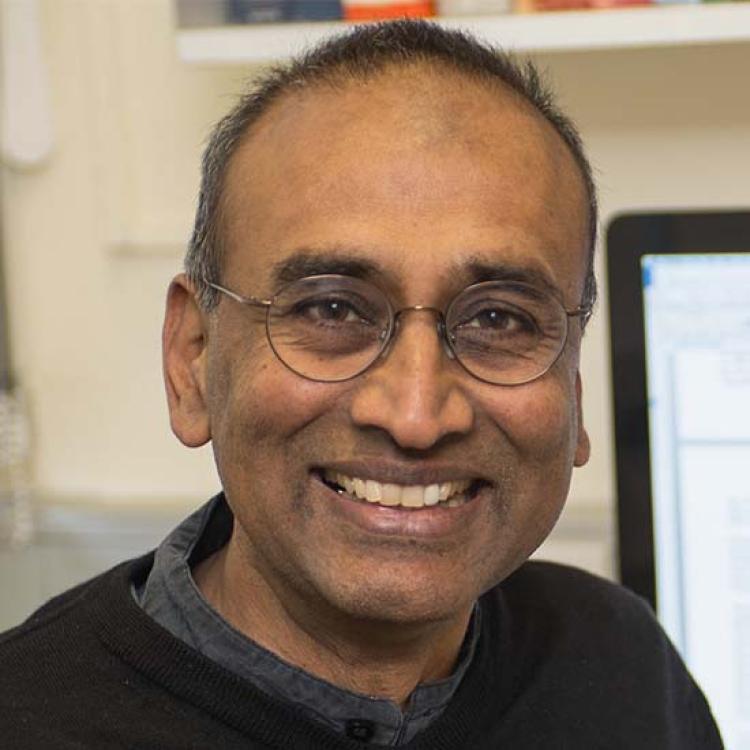Future, ethics of gene editing the focus of star-studded public forum May 23
Gene-editing pioneer Jennifer Doudna will join an all-star gathering of world leaders in the field for a free public forum, The Future and Ethics of Genome Editing, May 23 on the CU Boulder campus.
Doudna worked as a postdoctoral scholar in Nobel Laureate and Distinguished Chemistry Professor Tom Cech’s lab at CU Boulder from 1991 to 1994 and earned a Nobel Prize in 2020 for the co-discovery of CRISPR-Cas9, a revolutionary tool capable of banishing genetic diseases, eradicating pests and transforming global agriculture.

Nobel Laureates Tom Cech and Jennifer Doudna
Now a professor of biochemistry at the University of California, Berkeley, she is the subject of Walter Isaacson’s new best-selling book, The Code Breaker: Jennifer Doudna, Gene Editing, and the Future of the Human Race.
Her keynote on CRISPR will be followed by a broader panel discussion and Q&A about gene-editing featuring: Eric Olson, a University of Texas biologist who has used CRISPR to cure Duchenne Muscular Dystrophy in dogs; Özlem Tureci, co-founder of COVID-19 vaccine maker BioNTech; University of Cambridge biologist Jason Chin, who created an entirely new form of bacteria; RNA biologist Tracy Johnson of UCLA; and bioethicist Alta Charo. Nobel Laureate Venki Ramakrishnan will moderate the discussion.
“We are living in extraordinary times in terms of what science is capable of, but of course, when you start to translate this, safety, efficacy and ethical issues arise,” said Cech, who was awarded the Nobel Prize in 1989 and organized the forum. “We want to help get the public informed enough that they can weigh in on these issues.”
The ABCs of CRISPR
In 2013, Doudna and French microbiologist Emmanuelle Charpentier published a landmark paper showing that a gene-cutting system, CRISPR-Cas9, used naturally by bacteria to kill viruses, could be re-engineered as a tool to edit DNA.
RNA, or ribonucleic acid, served as a guide, homing in on specific letters in the genetic code, while the enzyme Cas9 served as a tiny set of molecular scissors.
Like the search and edit functions on a word processor, this new molecular machine could seek out and find particular letters in a DNA sequence and remove or replace them.
While genome editing had been around for decades, CRISPR made it faster, more precise and cheaper, enabling scientists to easily alter the blueprint of life for any organism.
Today, CRISPR-based cures are in the works for a host of intractable genetic diseases, including sickle cell anemia, muscular dystrophy and certain genetic diseases that cause blindness.
“There are 3,000 human diseases that arise from mistakes in the DNA alphabet,” said Cech. “With CRISPR, there’s an opportunity to not just identify them, but fix them.”
The technology has also already been successfully used to create fatter animals that yield more fur or meat. It could ultimately be used to eradicate malaria-causing mosquitoes or breed new crops that are resistant to drought or disease or loaded with critical nutrients.
With all this promise also comes some peril.
Designer babies and off-target effects
CRISPR has already been used to manipulate human embryos, enhancing certain desirable features. In 2018, a Chinese scientist named He Jiankui announced the births of the world’s first CRISPR-edited babies (twin girls whose embryos had been modified to be resistant to HIV).

Nobel Laureate Venki Ramakrishnan
The scientific community was horrified and called for a moratorium on using CRISPR for germline editing (editing of sperm and eggs that could have multi-generational effects). A Chinese court sent the scientist to prison.
The case stoked fears about what could come next.
“If I’d like my kid to be tall, strong and blond and I have the money it takes to edit their genome, should I be allowed to do that? These are the kinds of uses that are going to be very controversial,” said Cech.
Others have raised concerns that editing eggs, sperm or embryos to permanently do away with genetic variants deemed undesirable could effectively edit certain kinds of people—with Down syndrome, dwarfism or hearing loss, or instance—out of existence.
There are also economic considerations, as CRISPR-based cures for severe diseases will inevitably be unaffordable to much of the population.
Then, there is the specter of unintended consequences.
For instance, while eradicating malaria-causing mosquitos might sound advantageous at first, how would it impact the broader ecosystem? And could doing away with a genetic mutation that causes one disease, boost vulnerability to another? “With a technology like this you have to be absolutely sure that what you’re doing hasn’t changed some other parts of the genome, with off-target or unwanted side effects,” said Ramakrishnan, a molecular biologist at University of Cambridge and former president of The Royal Society.
Various forms of synthetic biology – essentially creating new life forms from scratch—are also being used to develop new bacteria and plants able to produce scarce ingredients for medicines or industry. On the flip side, they too could be used for harm—to create toxic compounds and new, even more deadly viruses.
“All of these gene-editing technologies have great benefits that could help us improve human health, agriculture and food security and make products in a more ecological way. But we need to really think about how to use them and regulate them wisely,” said Ramakrishnan.


